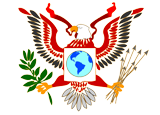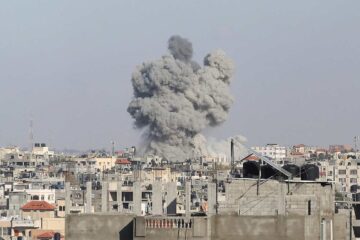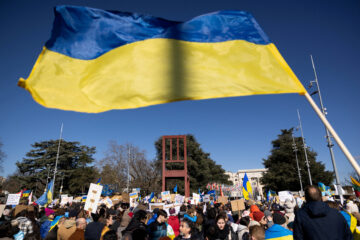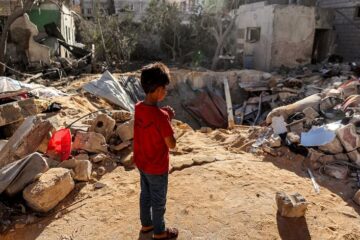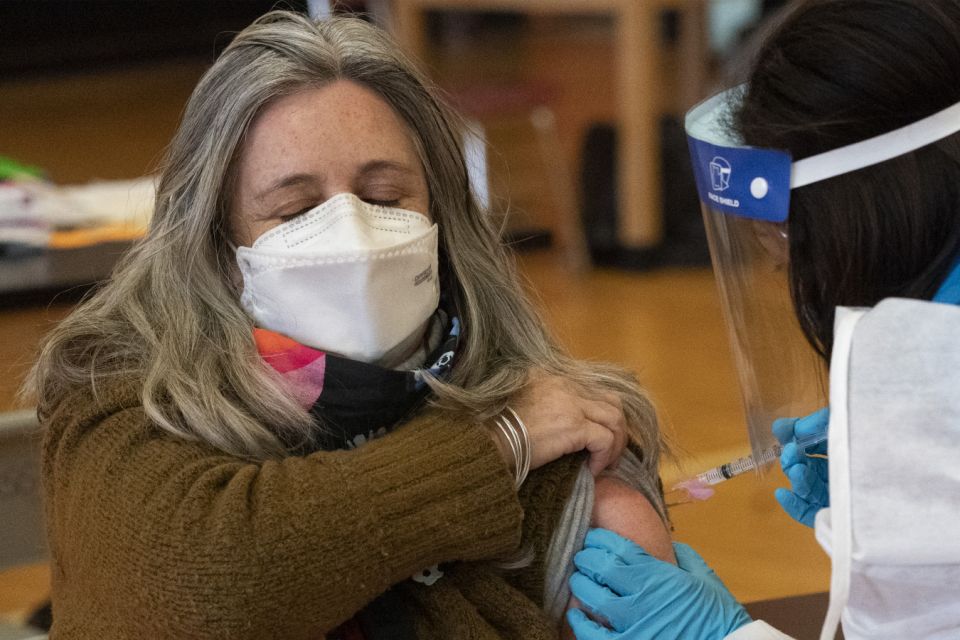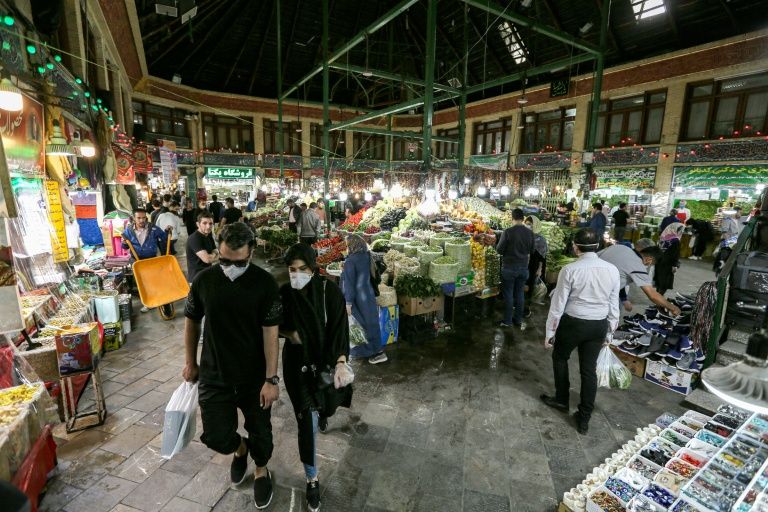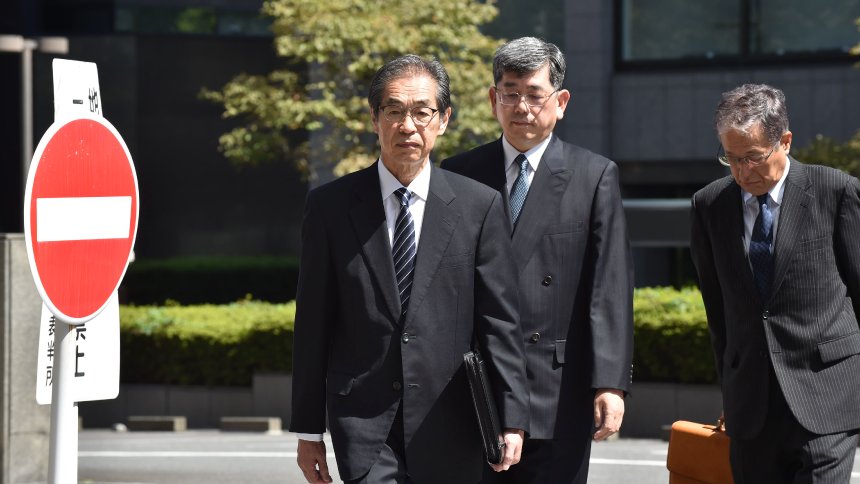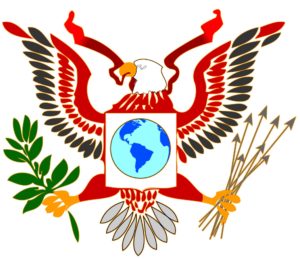Death toll in Ecuador earthquake rises to 238
The death toll from Ecuador\’s biggest earthquake in decades soared to at least 238 on Sunday as rescuers using tractors and bare hands hunted desperately for survivors in shattered coastal towns.
The 7.8 magnitude quake struck off the Pacific coast on Saturday and was felt around the Andean nation of 16 million people, causing panic as far away as the highland capital Quito and collapsing buildings and roads in a swath of western towns.
President Rafael Correa rushed home from a trip to Italy to supervise the emergency. "The immediate priority is to rescue people in the rubble," he said. "Everything can be rebuilt but lives cannot be recovered and that\’s what hurts the most."
Vice President Jorge Glas visited the quake zone and said 235 had died and more than 1,500 people were injured.
Coastal areas nearest the epicenter were worst affected, especially Pedernales, a rustic tourist spot with beaches and palm trees, which appeared largely flattened.
A Reuters witness said residents in Pedernales were using makeshift funeral caskets and holding veiling ceremonies to bury their dead. Nearly all homes appeared damaged. Some residents went through rubble looking for loved ones or belongings and police, soldiers and firemen were on site.
Authorities said there were some 163 aftershocks, mainly in the Pedernales area. A state of emergency was declared in six provinces.
The quake has piled pain on the economy of OPEC\’s smallest member, already reeling from low oil prices, with economic growth this year projected at near-zero. It has also propelled Glas – a possible candidate in Ecuador\’s February 2017 presidential election – into the limelight.
One photo on social media purporting to be the entrance to Pedernales showed a torn-up road with a crushed car in the middle and people standing behind.
Local TV broadcast images from Pedernales showing locals using a small tractor to remove rubble and also searching with their hands for people buried underneath.
Women cried after a corpse was pulled out. Locals said children were trapped.
"Everything is completely destroyed," a resident named Katrina told TV station Ecuavisa. "The majority of the buildings have fallen and there are a lot of dead."
Many people spent the night on the streets.
Enner Munoz, 40, a teacher from Pedernales, said he was in his car when he saw wooden houses and lamp-posts collapse around him.
"It was devastating. All the roads are cracked open, there were two landslides," he said by phone, adding that bricks had landed in the bed of his home in Pedernales.
His terrified family spent the night on the patio.
In Guayaquil, Ecuador\’s largest city, rubble lay in the streets and a bridge fell on top of a car.
"It was horrible, it was as if it was going to collapse like cardboard," said Galo Valle, 56, who was guarding a building in the city where windows fell out and parts of walls broke.
"I prayed and fell to my feet to ask God to protect me."
About 13,500 security force personnel were mobilized to keep order around Ecuador, and $600 million in credit from multilateral lenders was immediately activated for the emergency, the government said.
Ramon Solorzano, 46, a car parts merchant in the coastal city of Manta, headed away from built-up areas with his family. Photos from Manta showed Red Cross workers arriving, police hunting through debris, a smashed sculpture, injured people receiving treatment under tents in front of a hospital, and badly damaged buildings.
"Most people are out in the streets with backpacks on, heading for higher ground," Solorzano said, speaking in a trembling voice on a WhatsApp phone call. "The streets are cracked. The power is out and phones are down."
The government called it the worst quake in the country since 1979. In that disaster, 600 people were killed and 20,000 injured, according to the U.S. Geological Survey.
Canadian Prime Minister Justin Trudeau said on Twitter that two Canadians were among the dead and that the "scope of the devastation in Ecuador is shocking."
The U.S. State Department said in an email that it was working to confirm reports of Americans injured in the quake, although it had no reports of any U.S. citizens killed.
In international aid, Venezuela, Chile and Mexico were sending personnel and supplies, the left-leaning Correa government said. The Ecuadorean Red Cross mobilized more than 800 volunteers and staff and medical charity Medecins Sans Frontieres said it was sending a team from Colombia.
U.S. Secretary of State John Kerry tweeted his nation\’s solidarity and offered assistance.
Although tsunami warnings were lifted, coastal residents were still urged to seek higher ground in case tides rise.
The government said oil production was not affected, but closed its main refinery of Esmeraldas, located near the epicenter, as a precaution though it is likely to restart soon.
Residents on the Galapagos islands far off Ecuador\’s coast, home to numerous rare species, said they had not been affected by the quake.
The Ecuadorean quake followed two large and deadly quakes that struck Japan since Thursday. Both countries are located on the seismically active "Ring of Fire" that circles the Pacific, but according to the U.S. Geological Survey large quakes separated by such long distances would probably not be related.
"Even the earth\’s rocky crust is not rigid enough to transfer stress efficiently over thousands of miles," it said on its website. Quakes can cause other big quakes within a range of hundreds of miles, but can cause only small, brief quakes at a distance of thousands of miles, it said.
SOURCE: REUTERS
[do_widget_area inner_adsbar]
